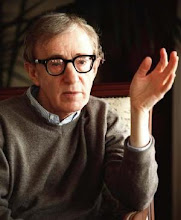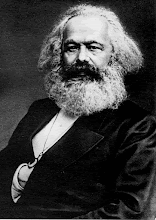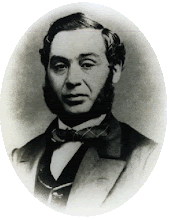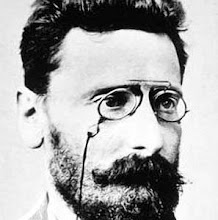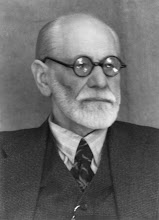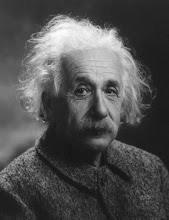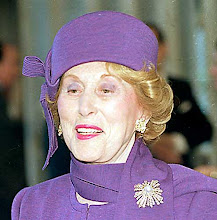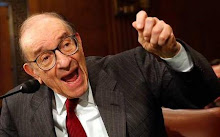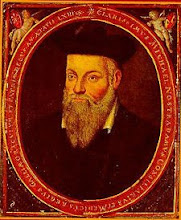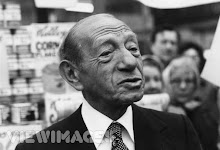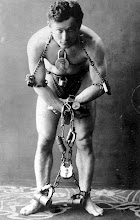 Barry Diller (born 2 February 1942) is the Chairman and Chief Executive Officer of IAC/InterActiveCorp and the media executive responsible for the creation of Fox Broadcasting Company and USA Broadcasting.
Barry Diller (born 2 February 1942) is the Chairman and Chief Executive Officer of IAC/InterActiveCorp and the media executive responsible for the creation of Fox Broadcasting Company and USA Broadcasting.Barry Diller was born February 2, 1942 in San Francisco, California, where he was raised and began his career through a family connection in the mailroom of the William Morris Agency after dropping out of UCLA after one semester. In 2001 he married fashion designer Diane von Fürstenberg. He is a life-long Democrat and supporter of progressive causes.
He was hired by ABC in 1966 and was soon placed in charge of negotiating broadcast rights to feature films. He was promoted to vice president in charge of feature films and program development in 1969. In this position, Diller created the ABC Movie of the Week, pioneering the concept of the made-for-television movie through a regular series of 90-minute films produced exclusively for television.
Diller served for ten years as the Chairman and Chief Executive Officer of Paramount Pictures Corporation starting in 1974. With Diller at the helm, the studio produced hit television programs such as Laverne & Shirley (1976), Taxi (1978), and Cheers (1982) and films ranging from Saturday Night Fever (1977), and Grease (1978) to Raiders of the Lost Ark (1981) and its sequel Indiana Jones and the Temple of Doom (1984) to Terms of Endearment (1983) and Beverly Hills Cop (1984).
From October 1984 to April 1992, he held the positions of Chairman and Chief Executive Officer of Fox Inc, parent company of Fox Broadcasting Company and 20th Century Fox, where he greenlighted hits like The Simpsons. Diller quit 20th Century-Fox in 1992 and purchased a $25 million stake in QVC teleshopping network. Diller resigned from QVC in 1995.
In 1997, Diller acquired the assets of Silver King Broadcasting, the collective group of over-the-air TV stations owned by then Bud Paxson's Home Shopping Network as well as the Home Shopping Network itself. Along with this acquisition, Diller also purchased the rights to the USA Network from the Bronfman family. Due to Home Shopping getting more notoriety on the cable networks from his former dealings with the QVC Network, Diller sought to repurpose the broadcast stations into independent, locally-run stations as part of a station group dubbed USA Broadcasting of which the flagship station was WAMI-TV in Miami Beach, FL. The purpose of the network was to have the flagship, WAMI, produce sports and news programming while testing general interest programming for the other stations in the group, of which the general interest programming would be locally produced by the other stations in the group. Due to the high costs involved with producing and acquiring talent for shows outside the typical areas of New York, NY and Los Angeles, CA, plus the significantly low ratings such shows received in Miami Beach, the remaining shows were moved to Los Angeles to regain traction, but never did. Diller eventually sold the TV assets to Univision after rejecting a bid from The Walt Disney Company. The USA Network and its assets were later sold off to Vivendi. Diller retained the assets of the Home Shopping Network and the subsequent Internet assets he acquired later to bolster the HSN Online stable that later became IAC/InterActiveCorp.
Diller is currently the Chairman of Expedia and the Chairman and Chief Executive Officer of IAC/InterActiveCorp, an interactive commerce conglomerate and the parent of companies including ServiceMagic, Home Shopping Network, Ticketmaster, Match.com, Citysearch, LendingTree and Connected Ventures, home of Vimeo and CollegeHumor. In 2005, IAC/InterActiveCorp acquired Ask.com, marking a strategic move into the Internet search category. Diller has been on the board of The Coca-Cola Company since 2002. The new headquarters of IAC/InterActiveCorp was designed by Frank Gehry and opened in 2007 at 18th Street and the West Side Highway in Manhattan's Chelsea neighborhood, an epicenter of the city's gay community. The western half of the block is dedicated to the building which stands several stories taller than the massive Chelsea Piers Sporting complex just across the West Side Highway. The extra floors guarantee a panoramic Hudson River view from Diller's sixth-floor office.
In 2001, Diller married fashion designer and longtime friend Diane von Fürstenberg.
In 2003, on the PBS TV program NOW with Bill Moyers, Diller vocalized a strong warning against media consolidation. In the interview he referred to media ownership by a few big corporations as an oligarchy, saying the concentration strangles new ideas.
Barry Diller was "the highest-paid executive [of 2005 fiscal year]" according to a report by The New York Times on Thursday, October 26, 2006 with a total compensation package in excess of $295 million.[4] In an opinion article in the New York Times of Nov 7, 2006, Nicholas D. Kristof awarded him his annual Michael Eisner Award, consisting of a $5 shower curtain, for corporate rapacity and laziness.Diller is responsible for what the media dubs "The Killer Dillers" – people whom Diller mentored and who later became big-time media executives in their own right. Examples include Michael Eisner (who was President & COO of Paramount Pictures while Diller was Chairman & CEO of Paramount Pictures, who went on to become Chairman & CEO of The Walt Disney Company), Dawn Steel (future head of Columbia Pictures and the first woman to run a movie studio, who worked under Diller at Paramount), Jeffrey Katzenberg (head of PDI/DreamWorks Animation, principal of DreamWorks SKG, former head of Walt Disney Studios, and a head of production of Paramount under Diller), Garth Ancier, President of BBC America, and Don Simpson, who was President of Production at Paramount under Diller and Eisner, was also included – he later went on to run a production company based on the Disney lot with Jerry Bruckheimer. Diller also had a well known heated working relationship with the controversial TV executive, Stephen Chao, whom he worked with at Fox Television and later hired as President of Programming and Marketing at USA Network.
Barry Diller is the owner of the sailing yacht EOS; at 93 metres it is the largest sailing yacht in the world.
 Szövetségesei és ellenségei ódákat zengenek intelligenciájáról, emberismeretéről, tárgyalási technikáiról, kisugárzásáról és arról a képességéről, ahogyan a maga malmára képes hajtani a vállalati intrikák hullámait. Nem tartozik a sztárként kezelt médiamogulok közé, pedig kevesen bírnak annyi tapasztalattal, mint ő, aki bejárta a szórakoztatóipar és a médiavilág minden szegletét. A televíziózásban korszakalkotó formulákat talált ki (a hét filmje, a négyrészes mini-sorozat); 30 évesen mindenfajta idevágó gyakorlat nélkül lett hollywoodi stúdiófőnök (felturbósította a gyengélkedő Paramountot, majd a Foxot); dolgozott keménykezű tulajdonosoknak (Rupert Murdoch, John Malone); önállósult, felfejlesztette cégét, egy vagyonért adott túl rajta (a USA Networks 10,8 milliárd dollárt kóstált); a Forbes listáján a 400 leggazdagabb üzletember között szerepelt. Miután a nyáron nem sikerült megszereznie az eladósodott Vivendit, most az internetre kacsingat. Napóleon és Machiavelli keveréke nem az a típus, aki feladja.
Szövetségesei és ellenségei ódákat zengenek intelligenciájáról, emberismeretéről, tárgyalási technikáiról, kisugárzásáról és arról a képességéről, ahogyan a maga malmára képes hajtani a vállalati intrikák hullámait. Nem tartozik a sztárként kezelt médiamogulok közé, pedig kevesen bírnak annyi tapasztalattal, mint ő, aki bejárta a szórakoztatóipar és a médiavilág minden szegletét. A televíziózásban korszakalkotó formulákat talált ki (a hét filmje, a négyrészes mini-sorozat); 30 évesen mindenfajta idevágó gyakorlat nélkül lett hollywoodi stúdiófőnök (felturbósította a gyengélkedő Paramountot, majd a Foxot); dolgozott keménykezű tulajdonosoknak (Rupert Murdoch, John Malone); önállósult, felfejlesztette cégét, egy vagyonért adott túl rajta (a USA Networks 10,8 milliárd dollárt kóstált); a Forbes listáján a 400 leggazdagabb üzletember között szerepelt. Miután a nyáron nem sikerült megszereznie az eladósodott Vivendit, most az internetre kacsingat. Napóleon és Machiavelli keveréke nem az a típus, aki feladja.Szülei ingatlanfejlesztők voltak, Beverly Hillsben nevelkedett fel, 19 évesen otthagyta az egyetemet (a rangos UCLA-t), és a William Morris ügynökség kifutófiújaként kezdte az ipart, majd családi kapcsolatok révén került az ABC programigazgatóságára. Későbbi fontos kollégája, Michael Eisner (jelenleg a Disney elnöke) így eleveníti fel könyvében első találkozásukat az ABC-nél: "Megdöbbentett, hogy a feje már akkor erősen kopaszodott. Bekísért az irodájába, anélkül, hogy bemutatkozott volna. Az állásinterjú alatt, amely húsz percig tartott, mindvégig udvarias volt, de látszott, hogy nem sokat törődik velem. Valahányszor kigyulladt egy gomb a telefonon, felkapott egy fülhallgatót, egy percig hallgatott, aztán folytatta a beszélgetésünket." Eisner ezután vacsorázni ment azzal a férfivel, aki beajánlotta őt az ABC-hez. "Azt mondtam a férfiról, hogy elég alacsony. "Nem az." Megemlítettem, hogy kopaszodik. "Ez sem igaz." A viselkedése kapkodó és kizárólag üzletre vonatkozik. "Ez lehetséges, de mindazok alapján, amit elmondtál, szerintem az asszisztensével találkoztál. Barry Dillerrel." Eisner később tudta meg: az ABC-s asszisztensek körében bevett gyakorlat volt, hogy belehallgattak főnökeik telefonbeszélgetéseibe, hogy lépést tartsanak az eseményekkel.
Dillert 1968-ban 26 tévéfilm gyártásával bízták meg. A másfél órás alkotásokat egyenként 450 ezer dollárból kellett elkészíteni, ami a fele volt annak, amit akkoriban az NBC költött hasonló dramatikus programokra. Senki sem vállalkozott a gyártásukra. A filmstúdiók nem akartak ilyen olcsón gyártani, főleg nem a mozivászon riválisa számára. Diller független producerekhez fordult, akik éhesek voltak a munkára; így találta meg Aaron Spellinget, a Starsky és Hutch, a T. J. Hooker, a Melrose Place későbbi producerét. 1970-ben Los Angelesbe helyezték át, nemcsak azért, mert a filmkészítés ott összpontosult, hanem mert felettese a távolban szerette volna látni az eredményesen dolgozó, de olykor kezelhetetlen Dillert. Néhány éven belül az ABC esti főműsoridejét heti három nap az ő programjai töltötték ki. Élen járt az olcsó, ám társadalmi témájukkal annál nagyobb érdeklődésre számot tartó doku-drámák gyártásában (homoszexualitás, vietnami háború, drogok), és ő indította el a Gyökerek című sorozatot is. 1973-ban honosította meg a négyrészes mini-széria formuláját (ma a televíziózás alapvető panelje), amikor 12 órás verziót rendelt Irwin Shaw Rich Man, Poor Man című könyvéből. A baljóslatú vélekedések ellenére a sorozat nagy siker aratott, amikor 1976-ben képernyőre került. Programjai ugyan sikeresek voltak, de az ABC évről-évre utolsó helyen végzett a csatornák nézettségi összesítésében.
"Diller felfelé bukott" - jegyezte meg a Variety, amikor a Paramountot birtokló Gulf & Western feje, Charles Bluhdorn őt kérte fel a stúdió társelnökévé, Frank Yablans mellé - annak ellenére, hogy Diller alkalmazottként sose tette be a lábát egyetlen filmstúdióba, nemhogy vezetőként. 32 éves volt ekkor. Lecserélte banánnak tetsző, sárga Jaguárját, és fejest ugrott a feladatba. Apa-fiú kapcsolat alakult ki Bluhdorn és Diller között, a főnök gyakran vendégül látta a Dominikai Köztársaságban álló birtokán, ahol Henry Kissinger-féle nagyságok fordultak meg rendszeresen, és már Diller "kiházasításán" törte a fejét, hogy ne csak remek vezetőt, de apát faragjon belőle (ami nem vált valóra).
"Bluhdorn azt remélte, hogy a két férfi közötti versengés helyre teszi Yablans elharapózó egóját, és mindkettejükből a legjobb munkát hozza ki. Csodálta azt a ravaszságot, amellyel Diller az üzleteket kötötte és a beosztottjait kezelte" - írja könyvében Peter Bart. Diller bevetette az általa "folyamatos kirúgás"-nak nevezett módszert: elszigetelni valakit az eseményektől, ellehetetleníteni őt az információk visszatartásával. Vetélytársa, Yablans hat hét múltán feladta, és kilépett! Miután gyorsan megvált az előző rezsimtől, maga mellé hívta ABC-s kollégáját, Michael Eisnert társelnöknek. Ő is filmes munkatapasztalat nélkül érkezett a posztra, 34 évesen.
Az elkövetkező tíz évben Hollywood óriásai közé hozták fel a sereghajtó stúdiót. 1977 és 1982 között megháromszorozták a forgalmat, és a profitot 13 millióról több mint 100 millióra tornázták fel! Sikerük lényege az úgynevezett "high concept" volt, ami elvetette a nyolcvanas évek popkultúrájába beágyazott filmiparának magjait: ha van egy világos, egyszerű ötleted, ami egy film alapja lehet, és ezt el tudod mondani egy-két mondatban, akkor nagy az esélyed, hogy ebből sikerfilm lesz. Az a film, amely nem egy érthető ötleten vagy történeten alapul, csak rétegfilm lehet, mert a nagyközönség nem fogja azzal fárasztani magát, hogy megértse. Ebből nőtt ki a mai folytatásokra és franchise-lehetőségekre koncentráló, kockázatkerülő filmipar. Elvégre Diller irányítása alatt készültek az első Star Trek- és Indiana Jones-mozifilmek. Ellenségei ezért jegyezik meg, hogy sosem tartozott az ágazat kreatív figurái közé: "Neki a filmek mindig termékek voltak. Ezért árul most trikókat a Home Shopping-nál", mondta egy megfigyelő a kilencvenes évek végén. A high concept szellemében fogtak bele forgatókönyvek fejlesztésébe, és nem vártak az ügynökségek javaslataira, az úgynevezett packagingre, amely a rendezőt, írót/könyvet, színészt együtt kínáló, ügynökségi jutalékkal megfejelt "csomagokat" jelenti. Nem mentek bele a népszerű könyvek filmes jogaira utazó stúdiós licitálásokba sem - mindabba, ami mára elengedhetetlenné vált a hollywoodi versenyben. A Paramount égisze alatt olyan filmek születtek, mint a Beverly Hills-i zsaru, a Flashdance, a Footlose, a Szombat esti láz, a Grease, az American Gigolo, a Benjamin közlegény, az Airplane!, meg művészfilmek, mint az Átlagemberek, a Becéző szavak, a Vörösök, az Atlantic City, a Mennyei napok, az Elefántember.
Diller és Eisner a stúdió pénzügyi stabilitását tartották elsődlegesnek. Az iparági átlag alatt tartották filmjeik költségvetését, és ahol nem bíztak a sikerben, még a forgatás során partnereket hoztak be, hogy minimalizálják a stúdió lehetséges veszteségét. Így ment a váratlanul nagyot durranó Flashdance profitja stúdión kívüli zsebekbe, vagy a Vörösök - Oscar-díjainak köszönhető - szerény nyeresége a Barclay's Bank kasszájába. Máskor már a finanszírozást is külső résztvevőkkel oldották meg, az amerikai adókedvezmények révén chicagói, New York-i fogorvosok és ügyvédek adták össze a filmek költségvetését, a jogszabály-módosítások után pedig az angol adótörvényeket kihasználva szereztek brit támogatókat. Elsőként kezdték el lábon eladni gyártás előtt álló filmjeiket (pre-sale) a tévécsatornáknak.
Bluhdorn halála után az új tulajdonos azzal próbálta magához láncolni a stúdió vezéreit, hogy megfosztotta őket hűséges középvezetőiktől. Így került szorításba Eisner is. Diller eleinte palástolta a veszélyt, de aztán - hamarosan lejáró szerződése tudatában - már csak másfelé kacsingatott. 1984. szeptember 12-én a lejtmenetbe került Foxhoz szerződött, hogy fellendítse a bizniszt. Tíz nappal később Eisnert a Disney - ismét egy szebb napokat látott birodalom - elnöke lett.
 Még alig ült le a székébe a Foxnál, 1985-ben tulajdonosváltás történt a stúdió felett, és a hiperkonzervatív Rupert Murdoch lett Diller új főnöke. A két mogul ambíciói találkoztak: Diller valóra válthatta nagy álmát, hogy létrehozza a "nagy három" (NBC, ABC, CBS) vetélytársát. Kétmilliárd (!) dollárért megvett egy hálózatot, amely az USA nyolc nagyvárosában működő csatornát fogott egybe, és a lakosság 23 százalékát érte el. Erre építette rá a negyedik országos tévécsatornát, a Fox Broadcastingot, amely eleinte csak hetente két este sugárzott programot. Három évbe telt, míg teljes műsoridejű csatornává vált, főként olyan sikerekkel, mint a Simpson család vagy később a Power Rangers. A filmstúdióról sem feledkezett el, 1989-ben a magyar származású Joe Rothot nevezte ki az élére, aki olyan családi mozik bevételeivel járult hozzá a News Corp. mérlegéhez, mint a Reszkessetek, betörők! és a Mrs. Doubtfire.
Még alig ült le a székébe a Foxnál, 1985-ben tulajdonosváltás történt a stúdió felett, és a hiperkonzervatív Rupert Murdoch lett Diller új főnöke. A két mogul ambíciói találkoztak: Diller valóra válthatta nagy álmát, hogy létrehozza a "nagy három" (NBC, ABC, CBS) vetélytársát. Kétmilliárd (!) dollárért megvett egy hálózatot, amely az USA nyolc nagyvárosában működő csatornát fogott egybe, és a lakosság 23 százalékát érte el. Erre építette rá a negyedik országos tévécsatornát, a Fox Broadcastingot, amely eleinte csak hetente két este sugárzott programot. Három évbe telt, míg teljes műsoridejű csatornává vált, főként olyan sikerekkel, mint a Simpson család vagy később a Power Rangers. A filmstúdióról sem feledkezett el, 1989-ben a magyar származású Joe Rothot nevezte ki az élére, aki olyan családi mozik bevételeivel járult hozzá a News Corp. mérlegéhez, mint a Reszkessetek, betörők! és a Mrs. Doubtfire.Dillernek az évek során egyre inkább elege lett abból, hogy a más birodalmát építi. Ötvenéves korára elmondhatta, hogy három médiakonszernt vezetett, és mindet nyereségesen. Eredményein felbuzdulva Murdoch-kal egyenrangú pozícióra törekedett, ám ez nem volt az ausztrál mogul ínyére. 1992-ben nyilvánosan kijelentette, hogy még egyszer nem fog másnak dolgozni - és önállósította magát...
A teljes, részletes életrajz ITT olvasható!
Forrás: Hullámvadász Médiaportál









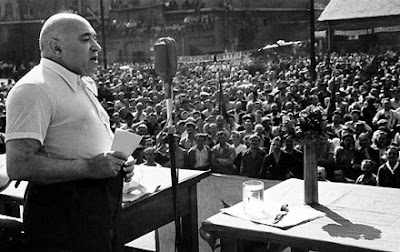











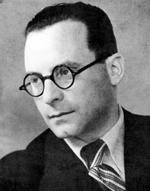


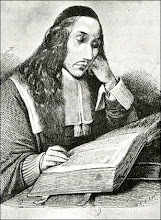
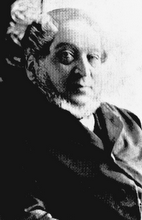
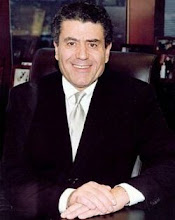
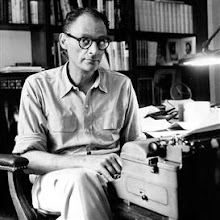.jpg)

